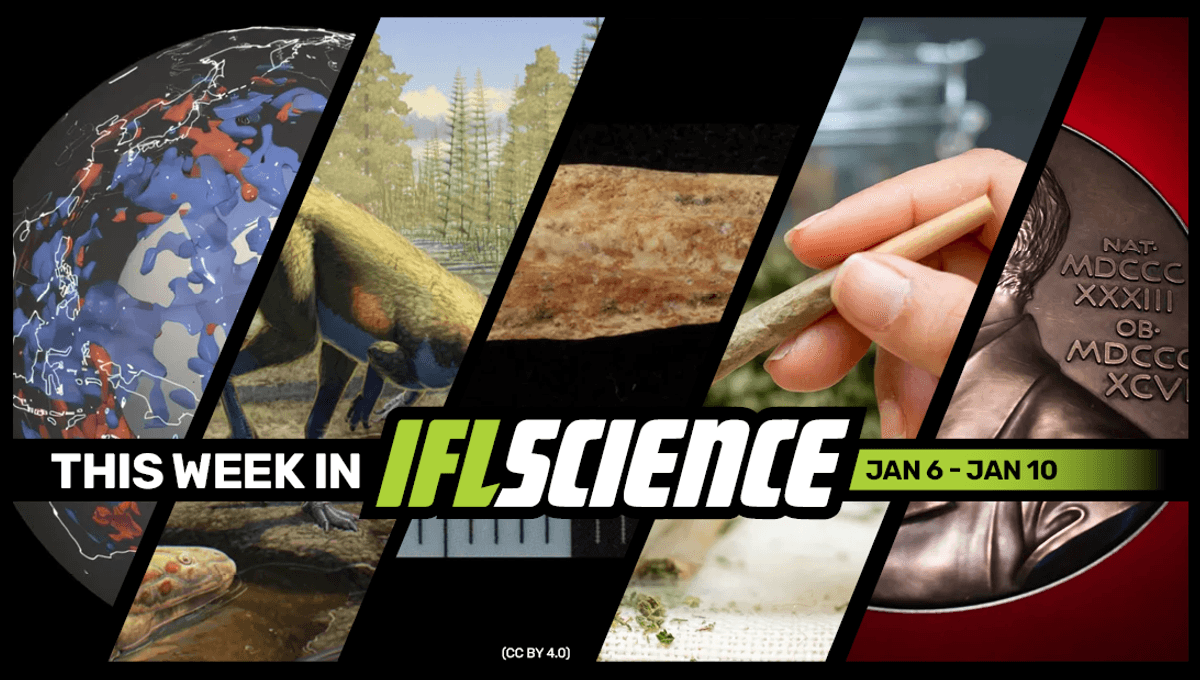
This week, the oldest equatorial dinosaur in the world was discovered dating back 230 million years, the world’s oldest 3D map may be accompanied by sexually suggestive cave art, and we ask: what is “Nobel disease”, and why do so many Nobel Prize winners seem to develop it? Finally, we investigate the mysterious metal that ancient writers linked to the city of Atlantis.
Subscribe to the IFLScience newsletter for all the biggest science news delivered straight to your inbox every Wednesday and Saturday.
Unexpected And Unexplained Structures Found Deep Below The Pacific Ocean
Geoscientists have used earthquakes to study the composition of the lower portion of the Earth’s mantle under the Pacific Ocean – and they’ve discovered something quite peculiar. There are zones where the seismic waves move in different ways, suggesting structures that are colder or have a different composition than the surrounding molten rocks. The team describes the presence of these structures as a major mystery. Read the full story here
Oldest Equatorial Dinosaur In The World Discovered, Dating Back 230 Million Years
The oldest equatorial dinosaur in the world, and North America’s oldest dinosaur, has been described in a new study. Dating back 230 million years, the chicken-sized dinosaur has big implications for our understanding of how dinosaurs spread across the world, pushing back their arrival in the Northern Hemisphere by millions of years. Read the full story here
First-Ever Painted Penis Bone Found In 2,000-Year-Old Roman Ritual Shaft
One of the largest collections of human and animal bones ever seen in a Roman feature in Britain has been discovered inside a ritual shaft at an ancient chalk quarry. Located in Surrey, southeast England, the 2,000-year-old pit contains the remains of 21 people as well as a dog penis bone that appears to have been decorated with red ochre. Read the full story here
The World’s Oldest 3D Map May Accompany Sexually Suggestive Cave Art
A cave shelter near Paris already known to host unique Palaeolithic art also appears to hold a three-dimensional map or model of the area around it, two archaeologists have claimed. If true, this would likely make it the oldest known representation of its kind, and certainly unmatched in scale from the era. Read the full story here
What Is “Nobel Disease”, And Why Do So Many Prizewinners Develop It?
There’s a surprisingly long list of Nobel Prize winners who have expressed pseudoscientific beliefs after their win, usually straying away from their field of expertise. In fact, there’s a term called “Nobel disease” or sometimes “Nobelitis” to describe these sometimes wacky and unscientific views. Read the full story here
TWIS is published weekly on our Linkedin page, join us there for even more content.
Feature of the week:
Orichalcum: Ancient Writers Spoke Of A Mysterious Metal Linked To City Of Atlantis
Ancient texts speak of a strange and valuable metal known as orichalcum. The mysterious material was often dismissed as a fantastical invention – until a large cache of the stuff was discovered in the Mediterranean Sea. Often said to possess a reddish hue, its precise identity wasn’t revealed until several breakthroughs in modern science and archaeology. Read the full story here
More content:
Have you seen our e-magazine, CURIOUS? Issue 30 January 2025 is available now. This month we asked, “Why Do Humans Love Watching Fire?” – check it out for exclusive interviews, book excerpts, long reads, and more.
PLUS, the We Have Questions podcast – an audio version of our coveted CURIOUS e-magazine column – continues. In episode 4, we ask “What Attacks You In The Most Remote Place On Earth?”
Season 4 of IFLScience’s The Big Questions podcast has concluded. To revisit all of season four’s episodes, click here.
Source Link: Unexplained Structures Discovered Deep Beneath Pacific Ocean, First-Ever Painted Penis Bone Found In 2,000-Year-Old Roman Shaft, And Much More This Week